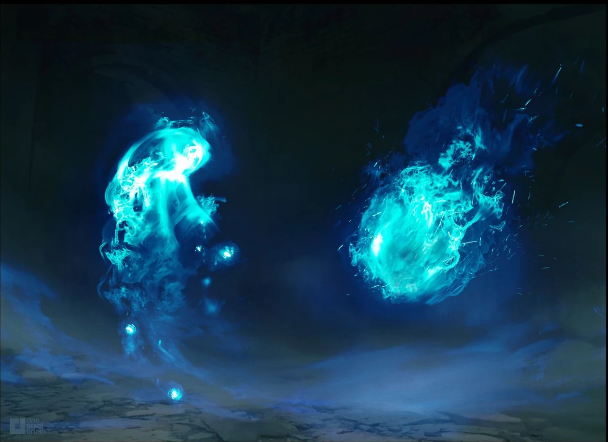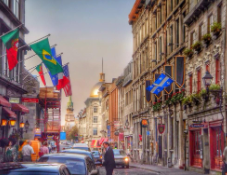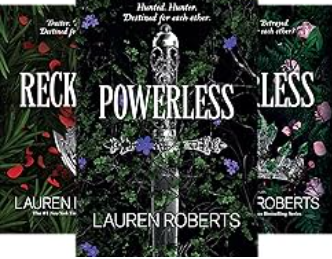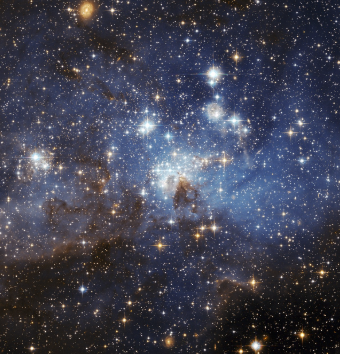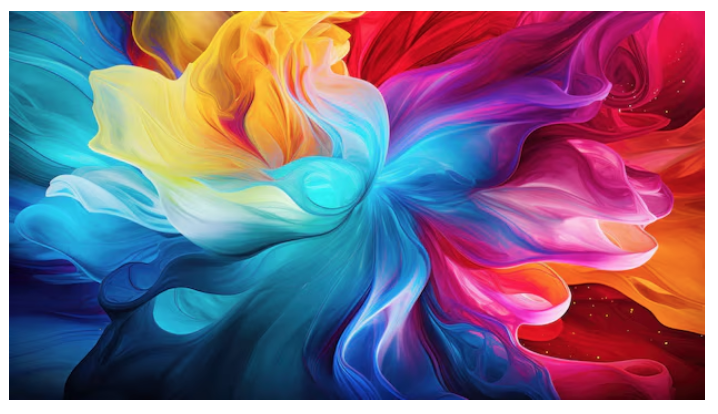A translucent figure, shrouded in mist, drifts through the darkness. Accompanied with it is a freezing cold wind, and then it suddenly disappears. Many people love a good ghost story, and a good deal of people believe in ghosts. But these elusive spirits never seem to bring anything with them except for more mysteries. Where did they come from? What are they doing here? Are they even real, hoaxes, or something in between? People usually end up believing one side or the other, for the existence of ghosts, or against it.
Not Your Typical Ghost
The type of ghost that the population is most familiar with are the types of dangerous, vengeful spirits from horror movies. No matter if you believe in ghosts or don’t, there are many stories of – or real – types of ghosts out there.
The “traditional ghost” is the type of ghost that most people include in horror movies,  and it’s the most broad and all-encompassing category of ghosts. These ghosts are what people believe to be spirits separated from a person after their passing. Included in this category are vengeful ghosts – spirits seeking revenge on somebody or something that did them wrong while they were alive. These ghosts haunt the places of their death, misery, or to communicate with one of the living, in a comforting way. Traditional ghosts can appear as figures in the dark, mysterious lights, disembodied noises, bells, screams, footsteps, and other auditory signs. A specific type of traditional ghost is the interactive spirit, who still is in touch with their feelings and emotions from when they were alive.
and it’s the most broad and all-encompassing category of ghosts. These ghosts are what people believe to be spirits separated from a person after their passing. Included in this category are vengeful ghosts – spirits seeking revenge on somebody or something that did them wrong while they were alive. These ghosts haunt the places of their death, misery, or to communicate with one of the living, in a comforting way. Traditional ghosts can appear as figures in the dark, mysterious lights, disembodied noises, bells, screams, footsteps, and other auditory signs. A specific type of traditional ghost is the interactive spirit, who still is in touch with their feelings and emotions from when they were alive.
Another type of ghosts are poltergeists, spirits who spend the afterlife pranking people who are still alive. Poltergeist, 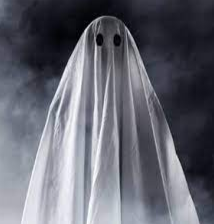 derived from “poltern” and “geist”, German words meaning ‘crash’ and ‘spirit’ – making ‘noisy ghost’. Poltergeists will prank the living, and sometimes in violent ways. Any noises, especially loud ones, that are unexplainable may come from a poltergeist. Objects flying through the air, fire, and other physical torment also happen with poltergeists. Usually, a poltergeist would appear with the presence of an adolescent, with the intention of harassing them. Poltergeists are tricky, since they disappear when strangers are around, causing others to believe that the victim is plagued with hysteria.
derived from “poltern” and “geist”, German words meaning ‘crash’ and ‘spirit’ – making ‘noisy ghost’. Poltergeists will prank the living, and sometimes in violent ways. Any noises, especially loud ones, that are unexplainable may come from a poltergeist. Objects flying through the air, fire, and other physical torment also happen with poltergeists. Usually, a poltergeist would appear with the presence of an adolescent, with the intention of harassing them. Poltergeists are tricky, since they disappear when strangers are around, causing others to believe that the victim is plagued with hysteria.
A less common type of ghost is the animal ghost: the spirit of a recently deceased creature. Unlike a human spirit, animal ghosts would haunt their place of residence rather than where they passed away. Animal ghosts are rarely seen, rather heard, or traces of them (such as an imprint of them on where they used to nap) are visible. They might be able to interact with inanimate objects, and they’re typically friendly ghosts – even the generally angrier ones won’t be able to cause harm.
Residual ghosts are not exactly ‘traditional’ ghosts, instead, they’re similar to memories. They are visions of an event that happened in the past, the echo of something that already happened. Residual ghosts are harmless, being ‘absorbed’ by the place where the event occurred. These residual ghosts usually appear at the same time – either the same time every day, week, year, or in other specific lengths of time.
Ecto-mists and funnel ghosts are similar types of spirits. 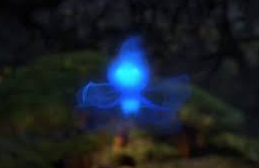 The Ecto-mist usually appears as a cloud of mist, sometimes swirling. Funnel ghosts are swirling columns of light. Both ecto-mists and funnel ghosts are commonly captured in photos, and are seen hovering above the ground. Ecto-mist can become a traditional ghost, and they usually appear in graveyards, battlefields and other ‘haunted’ places.
The Ecto-mist usually appears as a cloud of mist, sometimes swirling. Funnel ghosts are swirling columns of light. Both ecto-mists and funnel ghosts are commonly captured in photos, and are seen hovering above the ground. Ecto-mist can become a traditional ghost, and they usually appear in graveyards, battlefields and other ‘haunted’ places.
The final type of ghost is known as the “orb” ghost, and they are the most commonly photographed. These appear as transparent/translucent circles of light, either white, blue, or yellow. People believe that they might be souls, human or otherwise. Orbs are also known as “will-o’-the wisps” or spirit flames, ghost lights that can be seen in forests, marshes, and lakes. The wisps can be both good and bad, some of them have malicious intent of leading travelers astray, while others lead travelers to their hopes and dreams.
The Science of Ghosts
Skeptics say that ghosts don’t exist – and they’re hunting for solid evidence why. One of the most common scientific explanations for ghosts is a phenomenon known as sleep paralysis. Sleep paralysis happens during a process of dreaming known as Rapid Eye Movement, or REM sleeping. REM is the deepest sleep that one can experience, the state in which people dream in. When somebody is in REM sleep, their eyes dart around in their eyelids super fast, while the rest of their body remains completely paralyzed. Although your brain turns off the paralysis before you wake up, sometimes you’ll wake up before your brain has a chance to do that.
During sleep paralysis, while one is awake while being paralyzed, they are unable to move, frozen in a sleeping state. In this period, they are technically still dreaming. These dreams from REM sleep are projected into their experience of the world, causing a hallucination. People explain that ghosts can be explained because of hallucinations, dreaming of something that’s not actually there.
Another scientific explanation for ghosts is similar to how we see faces in the clouds. The human brain has a very active imagination. We might see faces in the clouds, finding shapes and familiar objects in shadows and patterns. Scientists explain that we might have an overactive imagination, and see “ghosts” in shadows and figures in the dark. This is known as pareidolia (pear-eye-doh-lee-ah), which happens due to all of the information that your brain takes in getting jumbled up in the process.
Since sleep paralysis happens to a good deal of people, and anybody at all can experience pareidolia, people have good reason to believe that ghosts are just previously unexplained science mysteries.
Ghostly Reality: Do They Actually Exist?
People say that there’s too many individual encounters with ghosts for them not to be real. About 20% of adults in America say that they’ve personally seen or encountered a ghost. 30% say that they’ve felt the presence of a ghost! Also taken into account are the countless ghost sightings that people have seen and even photographed.
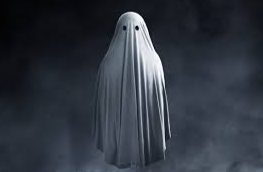 Another reason why people believe that ghosts are real is similar to how people believe that black holes are real. Only recently was a picture of a black hole published – or what people believe to be a picture of a black hole. Just as people claim to have pictures of ghosts, people claim to have a picture of a black hole. Nobody knows if it’s actually a black hole or a ghost, people just think that it is. Black holes and ghosts seem to have a similar effect on the environment around them, whereas black holes seem to consume matter, and ghosts seem to cause unexplainable noises and objects flying through the air. And nobody has ever been able to duplicate a black hole or a ghost. People say that there’s no solid proof for black holes, yet everybody believes they exist because of blurry photos and observations about the effect on the environment. We arguably have more solid evidence that ghosts exist than black holes do.
Another reason why people believe that ghosts are real is similar to how people believe that black holes are real. Only recently was a picture of a black hole published – or what people believe to be a picture of a black hole. Just as people claim to have pictures of ghosts, people claim to have a picture of a black hole. Nobody knows if it’s actually a black hole or a ghost, people just think that it is. Black holes and ghosts seem to have a similar effect on the environment around them, whereas black holes seem to consume matter, and ghosts seem to cause unexplainable noises and objects flying through the air. And nobody has ever been able to duplicate a black hole or a ghost. People say that there’s no solid proof for black holes, yet everybody believes they exist because of blurry photos and observations about the effect on the environment. We arguably have more solid evidence that ghosts exist than black holes do.
So should we believe that ghosts exist? Based on what you’ve learned, what do you think?
